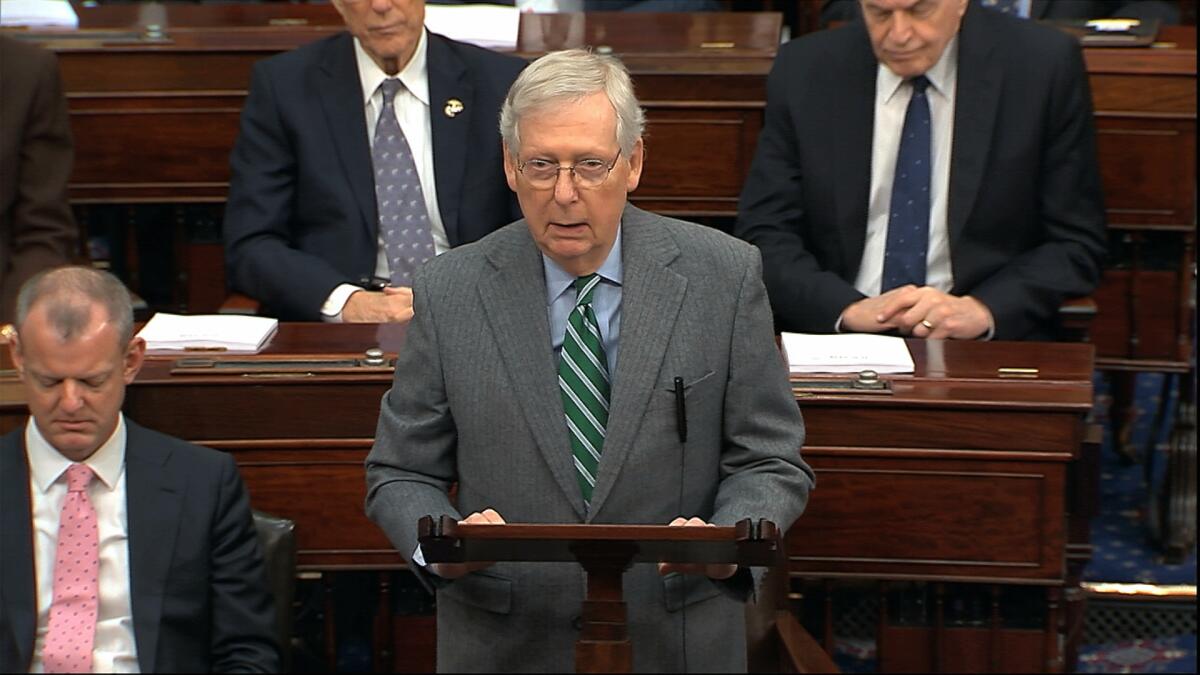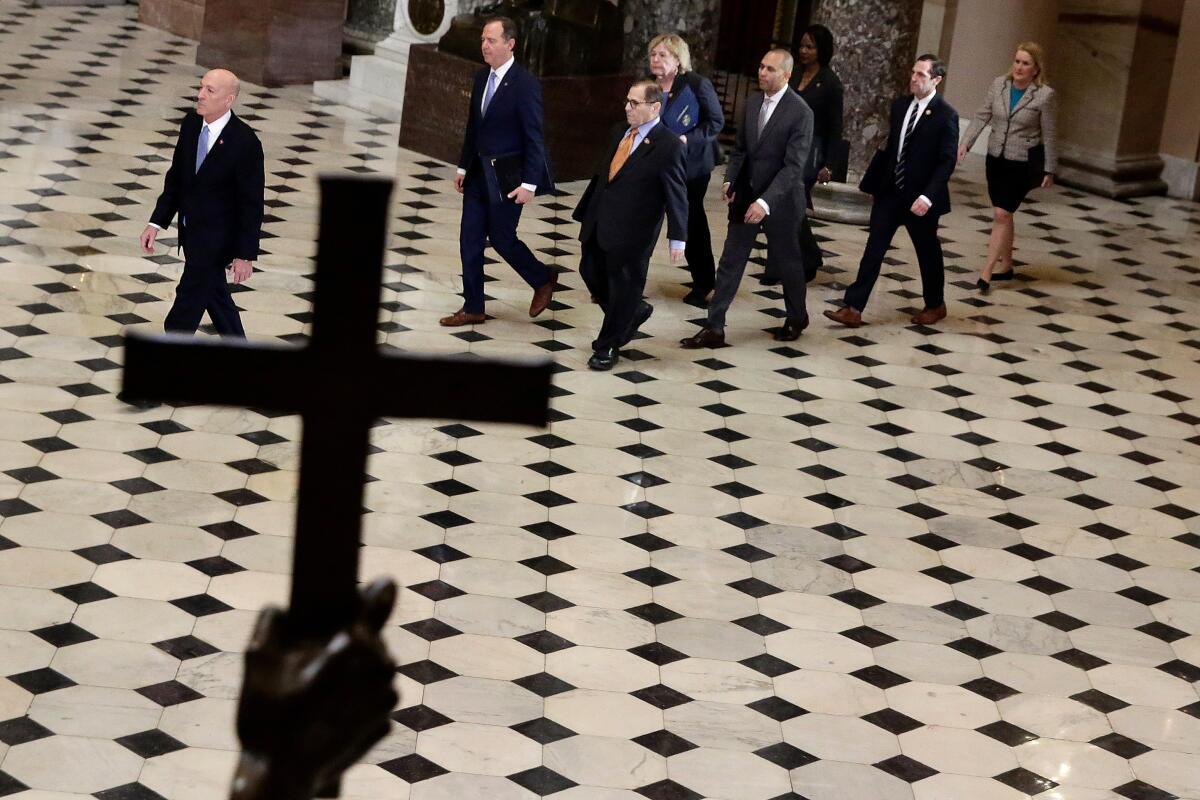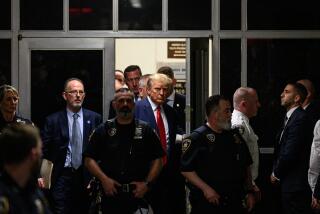How Trump’s impeachment trial may look similar to Clinton’s, and how it will not

- Share via
WASHINGTON — As President Trump’s impeachment trial gets underway, both sides are pointing to how the Senate handled the proceeding during the 1999 trial of President Clinton.
Senate Majority Leader Mitch McConnell (R-Ky.) says he modeled the GOP rules for Trump on the ones used for Clinton.
Democrats say that’s wrong, noting key differences.
And on Tuesday, McConnell — under pressure from Republicans who wanted the Trump rules to be closer to those used in 1999 — abruptly backed down from some controversial proposals and agreed to adopt a timetable closer to the one used for Clinton.
Here’s a comparison between 1999 and today:
How it’s the same

How long each side will speak: The White House lawyers and the prosecutors for the House, who are called House managers, will each get a total of 24 hours spread over three days to make their case to the Senate, just like they did during Clinton’s impeachment. During Clinton’s impeachment trial, neither side used all of their time.
McConnell initially proposed compressing those 24 hours into two days each, which would have resulted in 12-hour days rather than eight-hour days, but the proposed timeline was abruptly changed Tuesday as debate began.
A decision on witnesses likely won’t come until after opening arguments and questions from senators: After the House managers and the White House lawyers make their case over six days, the senators will get 16 hours to ask questions of them in writing. Then, there will be four hours of debate by the House managers and Trump attorneys on the question of subpoenaing witnesses and documents.
At that point the Senate will vote on whether to subpoena witnesses and documents. The witnesses would be deposed behind closed doors and then the Senate will consider again whether to hear from them publicly.
That’s basically what happened in the Clinton trial, when senators voted in favor of hearing from witnesses, but only via videotaped depositions, not in-person testimony before the Senate.
The Senate will accept the House record of its impeachment inquiry: This was another last-minute change. McConnell on Monday released proposed rules that would not automatically include the House record. They would be included only after a motion and vote at the end of the trial.
After some Republicans balked, he agreed to accept the evidence at the start, as occurred with Clinton.
GOP senators say they looked to Bill Clinton’s impeachment trial for guidelines on Trump’s. Here’s a timeline of the key dates and moments from the 1999 trial.
How it’s not

The rules aren’t bipartisan: The Clinton rules were largely negotiated by Republican and Democratic leaders before the trial began. The Senate then met behind closed doors to debate and passed the rules unanimously.
This time there were some public attempts by Senate Minority Leader Charles E. Schumer (D-N.Y.) at negotiations, but what he wanted — an assurance that certain witnesses would be allowed — was a nonstarter with Republicans. Instead, McConnell wrote the rules and worked with his Republican colleagues to ensure that he had the votes to pass it without Democratic support.
No built-in motion to dismiss: The Clinton rules inserted a vote to dismiss the charges before the Senate would consider whether to call witnesses.
That doesn’t exist in the current trial rules. Instead, a motion to dismiss can be made at any point during Trump’s trial. McConnell told reporters last week that he didn’t have enough Republican votes to dismiss the charges rather than hold a trial. That could of course change as the trial goes on if House managers are not proving their case.
More to Read
Get the L.A. Times Politics newsletter
Deeply reported insights into legislation, politics and policy from Sacramento, Washington and beyond. In your inbox twice per week.
You may occasionally receive promotional content from the Los Angeles Times.











